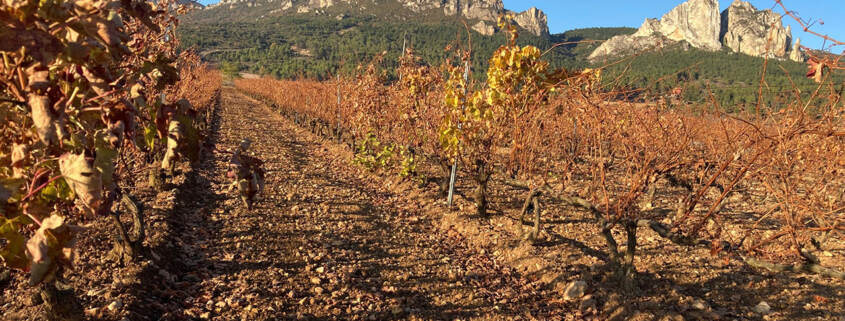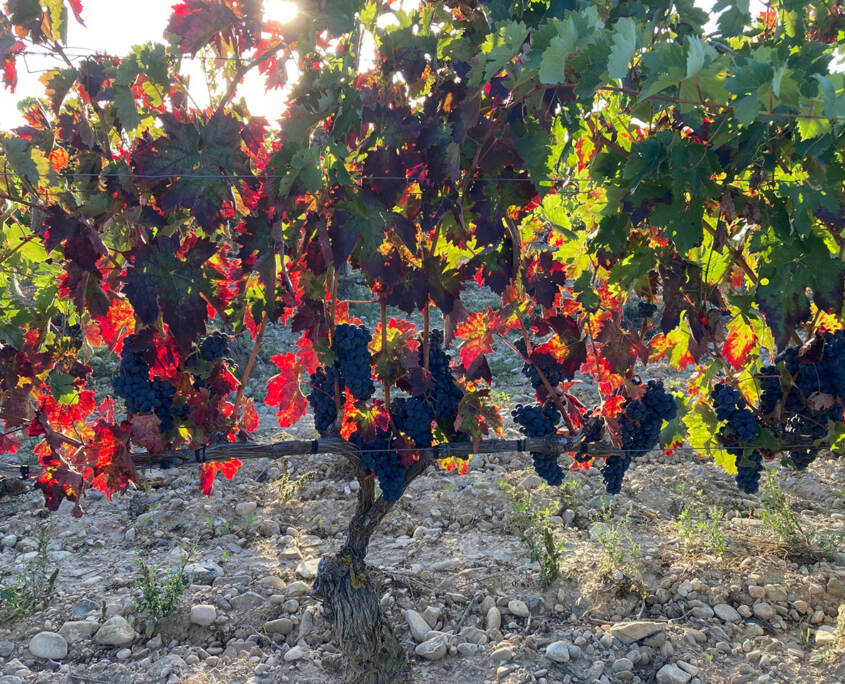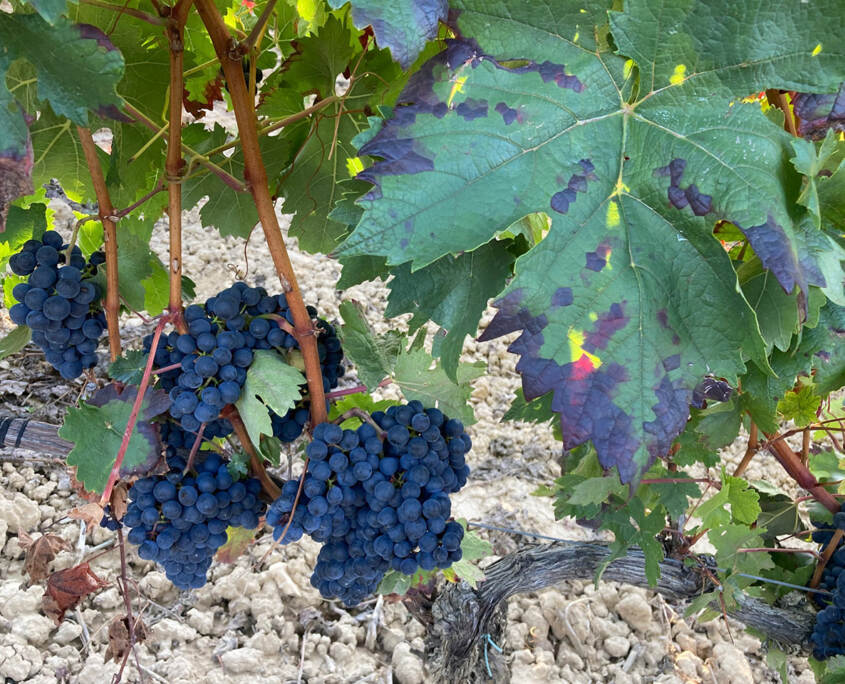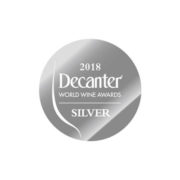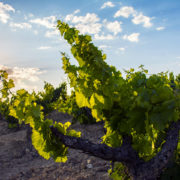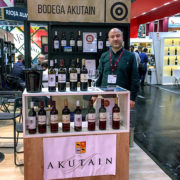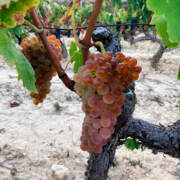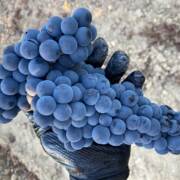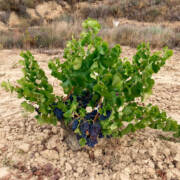Bodega Akutain 2021 Harvest
Continuing with our tradition started a couple of years ago of sharing on our website the notes that we internally collect about the developement of the year and the harvest, we are pleased to present those corresponding to the 2021 campaign / harvest. This information will then be very useful for us in Akutain when making decisions, and we also believe that it will be very interesting for those consumers who, when drinking an Akutain wine, have the curiosity and the desire to expand the information about that wine, the vintage, similarities / differences between vintages …
We like to explain that in these notes we usually capture our own impressions and memories about our vineyards and their surroundings, located around our winery in Haro (Rioja Alta), right on the slopes of the Obarenes mountains, in the area that is placed between the towns of Haro, Villalba, Sajazarra, Cihuri and Anguciana. Consequently, there may be variations towards the experiences obtained during the same campaign in neighboring regions.
 The winter this year has been quite dry and we have suffered a frost that partially affected our Cihuri vineyard. Fortunately, later the spring and part of the summer went by without great events apart from the lack of rain. This dry year, has led to less stress in terms of fungal diseases (mildu, oidiu …), but it has also meant reaching the last weeks before harvest with the grapes showing very small sizes (you could already see it from the veraison). However, at the beginning of September some strong rains and some hail fell (a strong typical autumn cold front that we call “gota fría” in Spain crossed the whole country). Luckylly we were not affected by the hail in our surroundings, and those rains helped the fruit to fatten a little bit, causing also certain fear of the botrytis that this humidity could bring in the last phase of the grape reaching maturity. However, there finally was a very positive evolution afterwards, with weeks of very good weather accompanying us from mid-September to the end of November, allowing us to wait for optimal ripening of the grapes, and to select and harvest each vineyard practically “when we wanted” … In addition, these weeks of good weather before the harvest came together in Rioja Alta with cool nights, “obliging the grapes to protect themselves” from the cold with their skins still thick and tight. The situation has been a bit more complicated for the white grapes in our area, since they had less time than the reds to air between the rains of early September and the harvesting time (white grapes are always harvested earlier … ). For this reason the choice of the harvesting time has been key specially for white grapes, since the line between needing a little more ripening to the risk of the grapes getting botrytis has been very fine in 2021. Fortunately, the few white grapes (Viura) that we have in Akutain entered the winery in a very healthy condition. We started harvesting our Cihuri vineyard on October 11th. Then we harvested our Fonzabala vineyard on the 12th and the La Manzanera vineyard (around the winery) on the 13th. Finally, we finished introducing grapes in the winery on October 16th with the grapes from our Gembres vineyard (always the last one with its 650m altitude), after all the grapes widely reached the ideal ripening point and slowly with a certain fear of the possibility of botrytis appearing also in the red grapes. Consequently, in 2021 we finished harvesting exactly one week later than in 2020.
The winter this year has been quite dry and we have suffered a frost that partially affected our Cihuri vineyard. Fortunately, later the spring and part of the summer went by without great events apart from the lack of rain. This dry year, has led to less stress in terms of fungal diseases (mildu, oidiu …), but it has also meant reaching the last weeks before harvest with the grapes showing very small sizes (you could already see it from the veraison). However, at the beginning of September some strong rains and some hail fell (a strong typical autumn cold front that we call “gota fría” in Spain crossed the whole country). Luckylly we were not affected by the hail in our surroundings, and those rains helped the fruit to fatten a little bit, causing also certain fear of the botrytis that this humidity could bring in the last phase of the grape reaching maturity. However, there finally was a very positive evolution afterwards, with weeks of very good weather accompanying us from mid-September to the end of November, allowing us to wait for optimal ripening of the grapes, and to select and harvest each vineyard practically “when we wanted” … In addition, these weeks of good weather before the harvest came together in Rioja Alta with cool nights, “obliging the grapes to protect themselves” from the cold with their skins still thick and tight. The situation has been a bit more complicated for the white grapes in our area, since they had less time than the reds to air between the rains of early September and the harvesting time (white grapes are always harvested earlier … ). For this reason the choice of the harvesting time has been key specially for white grapes, since the line between needing a little more ripening to the risk of the grapes getting botrytis has been very fine in 2021. Fortunately, the few white grapes (Viura) that we have in Akutain entered the winery in a very healthy condition. We started harvesting our Cihuri vineyard on October 11th. Then we harvested our Fonzabala vineyard on the 12th and the La Manzanera vineyard (around the winery) on the 13th. Finally, we finished introducing grapes in the winery on October 16th with the grapes from our Gembres vineyard (always the last one with its 650m altitude), after all the grapes widely reached the ideal ripening point and slowly with a certain fear of the possibility of botrytis appearing also in the red grapes. Consequently, in 2021 we finished harvesting exactly one week later than in 2020.
The grapes entering Bodega Akutain in 2021 have finally been very healthy grapes of superior quality (the fruit that was so small when the September rains arrived became somewhat fatter, but remained quite small, thus obtaining “greater substance” with a higher concentration of skins and seeds), although this meant a sacrifice in quantity: production has not only been below the maximum per hectare allowed by the DOCa. Rioja for red varieties (as almost always in Akutain), but also below our usual average. The difference has not been dramatic and we hope that this will pay out later in the quality of the wines.
At the time of writing these lines, the wines are still undergoing malolactic fermentation, since the cold that has been accompanying us throughout December has slowed down the activity of the autochthonous bacteria that carries it out in our winery. This is normal and it does not have any negative effect on the wine, which will simply take longer to finish this malolactic fermentation process. At Bodega Akutain we accept it and prefer not to force the processes with temperature treatments, faithful to our philosophy of working without haste and with minimal intervention. However, we can already appreciate that high quality wines are showing (the alcoholic fermentation went quickly and without sudden stops or excessive heating: the wines “resulted almost by themselves”), with ideal analytics and very balanced. They present typical alcoholic degrees in classic Riojas, and they also show a lot of color and a lot of extract that will need to be stabilized with time, work in the casks, decantation and racking … For this reason, we believe that the 2021 harvest will give us an important aging potential, although we also managed to keep achieving that “fruity touch” that we like so much for our young, non-barrel-aged wine “Akutain Cosecha”, coming from our Fonzabala vineyard.
As a conclusion, we are very satisfied with the results of the 2021 harvest and we will carry out the aging work in the cellar in 2022 with the hope that all this potential will be confirmed in due course with excellent wines.
Salud (with the full double meaning in Spanish: as a toast, and wishing good health to everybody in these times…)!!!!
- Our vineyard of Gembres going to sleep in November after harvest.
- Grapes from our Cihuri vineyard just before harvest.
- Some Viura grapes from our Manzanera (around our winery) vineyard just before harvest.
- Grapes from our Fonzabala vineyard just before harvest.
- Sugar or potential alcohol content control from the first must after harvest.
- Emptying the fermentation vat once it is finished.
- Our 2021 rosé during alcoholic fermentation.
